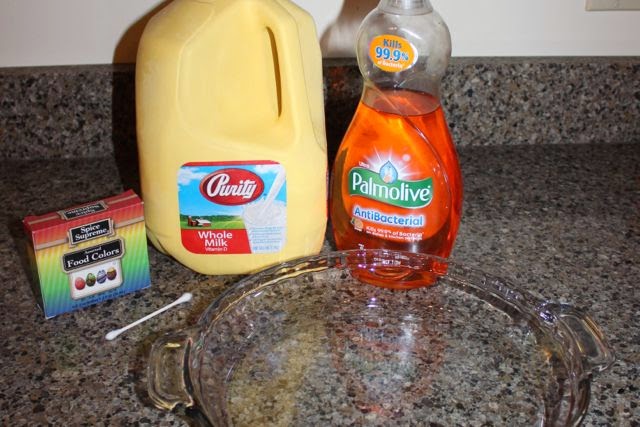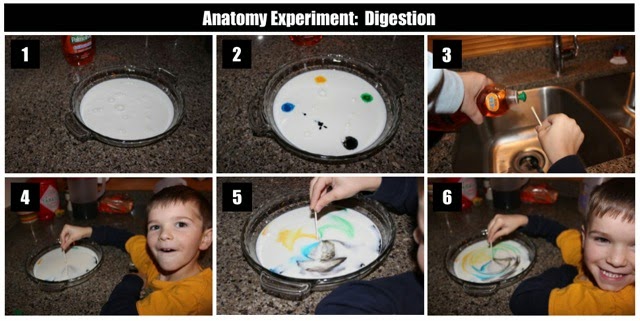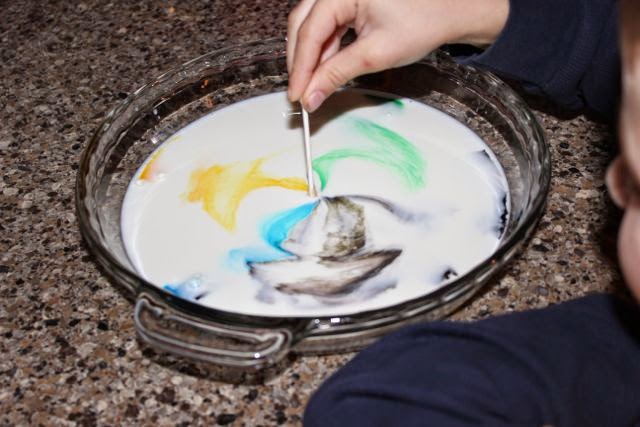This is a very simple experiment using normal household items.
Purpose: Model how bile from the liver digests fat as it enters the small intestine.
Materials:
- Shallow dish or pie pan
- Cotton swab
- Whole milk
- Food coloring
- Liquid dish soap or hand soap
- Pour about 1/2 inch of milk into the dish/pan.
- Add four different drops of food coloring at 12 o’clock, 3 o’clock, 6 o’clock, and 9 o’clock.
- Put some dish soap on the tip of a cotton swab
- Insert the cotton swab into the center of the pan of milk.
- Food coloring will start to swirl…
- …and swirl and swirl.
What’s happening?
The liver makes a liquid called bile, which is used to break down the fat from our food as it enters the small intestine. Bile acts to some extent like a surfactant. When soap (a surfactant) surrounds a fat (or dirt or grime), it starts to break down the fat (or dirt or grime) into smaller particles. In this experiment, the soap represents bile as it attempts to break down the fat that’s inside the milk. But the fat in the milk is so spread out that the soap cannot easily surround it, which causes it to swirl as it continues to try to surround the fat particles.
Due to its simplicity and its wow! factor, this experiment is definitely one of our favorites!
To learn more about how your liver works, refer to Unit 7: Body Organs of the free ebook Classic Elementary Life Science. Be sure to also download the corresponding parent text!



